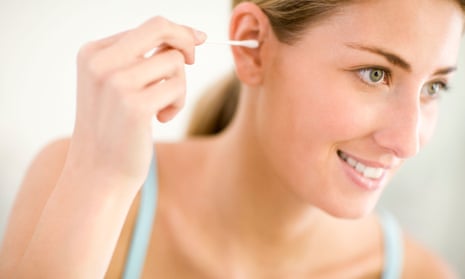Ears that are blocked with wax should not be syringed. For thousands of years, the syringe has been the ear doctor’s tool of choice (Roman author Celsus wrote about it in De Medicina), but now the health watchdog Nice says a syringe pumping water into the ear is “potentially harmful”. Why?
“You can’t control the pressure; you don’t know how hard it is blasting water into the ear,” says Prof Tony Wright of the UCL Ear Institute. Electronic irrigators, which Nice recommends, allow the otolaryngologist (ear, nose and throat specialist) to control pressure, but they are still only an update of the syringe. So, here are the dos and don’ts of safe earwax removal.
Listen to the ear doctors. ENT UK, the association for ear, nose and throat doctors, does not recommend the irrigation method at all.
“ENT surgeons all believe the best way to remove wax is under direct vision with a little suction device,” says Wright. Ask your GP to refer you. Private clinics offer this microsuction service – a microscope with a powerful sucker – for about £40 an ear. Some do buy-one-ear-get-the-second-half-price.
Avoid cotton buds, as these push wax further into the ear.
In fact, don’t stick anything in your ears. “The rule that you should not put anything smaller than an elbow in your ear is absolutely right,” says otolaryngologist Mike Dilkes. “Ears are self-cleaning.” He mentions an experiment in which a dot of ink is placed at the end of the ear canal by the ear drum. Observed over a period of six to eight weeks, this ink makes its way down the canal and out of the ear, proving that wax deals with itself. This “skin migration”, however, occasionally malfunctions. In which case, Dilkes says, you need microsuction.
If you find yourself reaching for cotton buds, pen lids and other things to put in your ear, you are probably suffering from an itchy ear, rather than excess wax (those with eczema are particularly susceptible). Treat with a steroid cream.

Comments (…)
Sign in or create your Guardian account to join the discussion